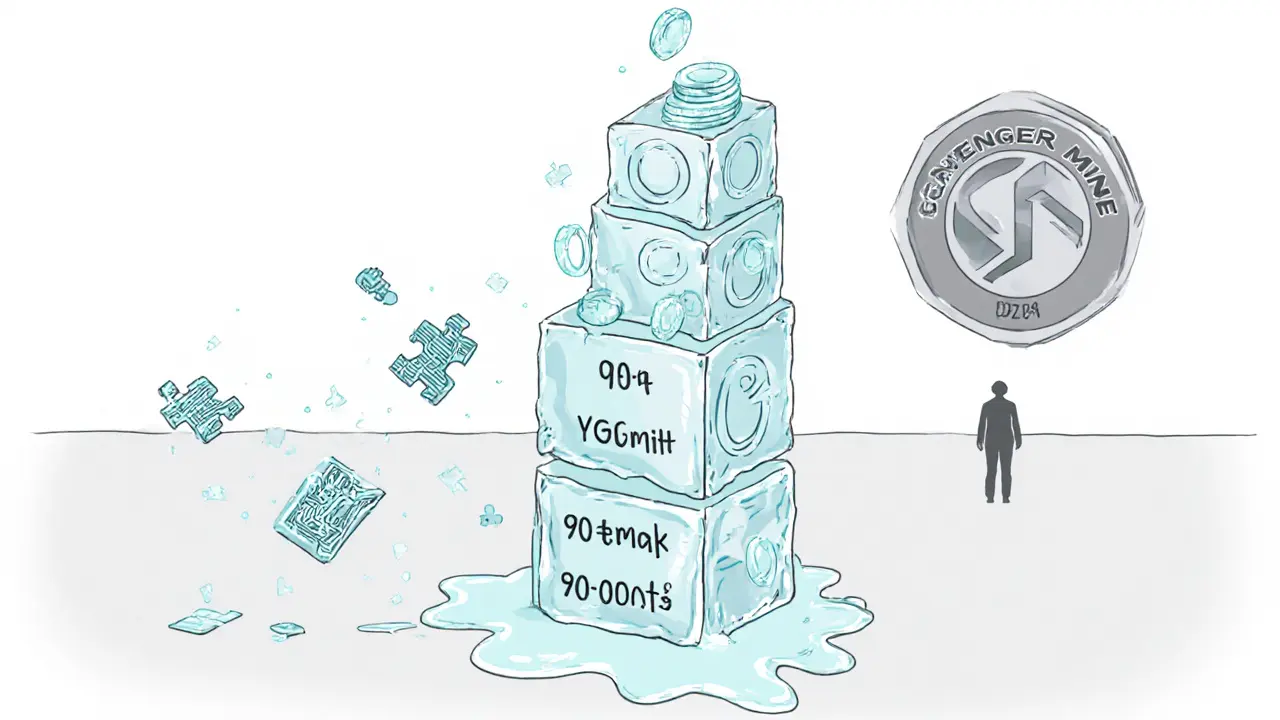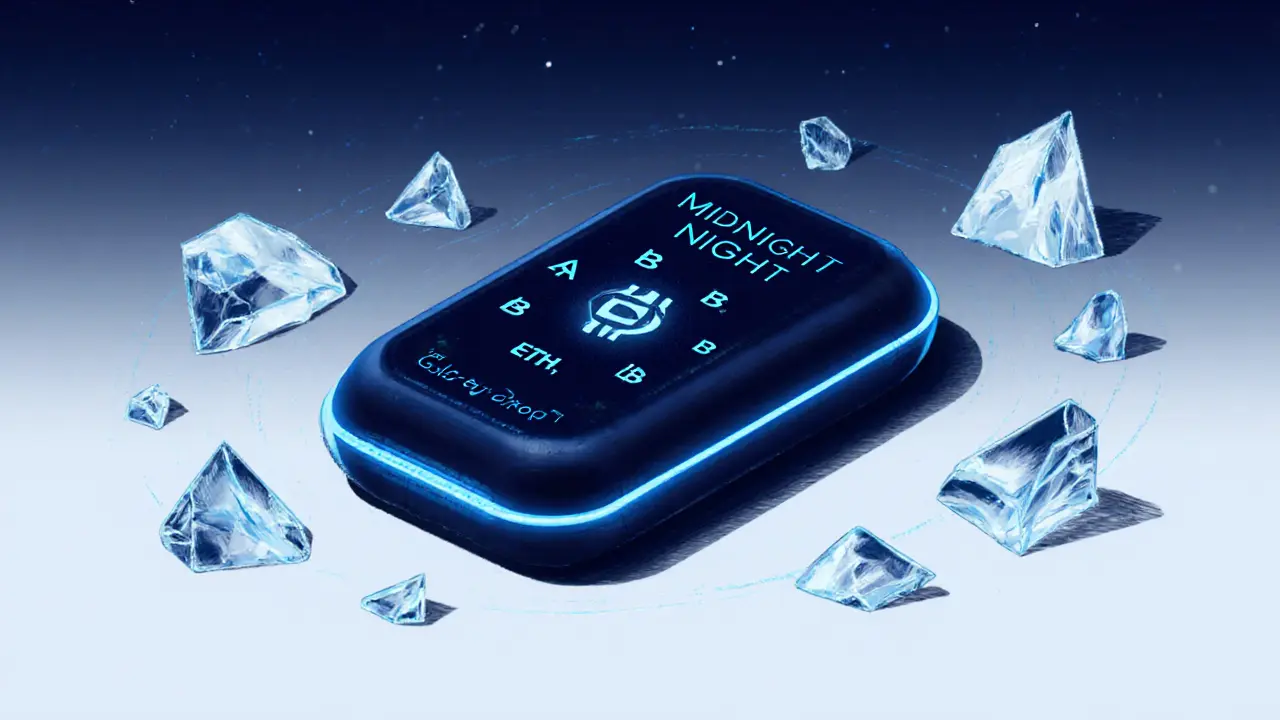NIGHT Token Airdrop Calculator
Calculate your expected NIGHT token allocation based on holdings from June 11, 2025
NIGHT tokens are released gradually over 360 days after mainnet launch
| Release Period | Release Amount | Estimated Date |
|---|---|---|
| Q1 | 25% | TBD (After mainnet launch) |
| Q2 | 25% | TBD (After mainnet launch) |
| Q3 | 25% | TBD (After mainnet launch) |
| Q4 | 25% | TBD (After mainnet launch) |
Enter your holdings to see your expected allocation
Midnight (NIGHT) Token Airdrop is the massive 2025 distribution of 24 billion NIGHT tokens that aims to kick‑start the privacy‑focused Midnight Network on Cardano. If you held crypto on any of eight major blockchains in August 2025, you probably received an email or a Reddit post urging you to claim your share before the October 4 deadline. This guide walks you through who qualified, how the claim worked, what the vesting schedule looks like, and where the unclaimed tokens are headed next.
What the Glacier Drop Was
The first phase, called the Glacier Drop, launched on August 6, 2025 and opened a 60‑day claim window. It was the only public distribution of the NIGHT token, representing the entire genesis mint. The name reflects the cold‑storage vibe - tokens were frozen until users proved ownership and then gradually thawed over a year.
Eligibility - Snapshot and Weighted Allocation
Eligibility hinged on a snapshot taken on June 11, 2025. Your wallet had to hold at least $100 worth of the native coin of one of the supported chains at that moment. The eight ecosystems were:
- Cardano (ADA)
- Bitcoin (BTC)
- Ethereum (ETH)
- Ripple (XRP)
- Solana (SOL)
- Avalanche (AVAX)
- BNB Chain (BNB)
- Brave (BAT)
The allocation was weighted heavily toward Cardano holders: 50 % (12 billion NIGHT) reserved for ADA wallets, 20 % for BTC holders, and the remaining 30 % split proportionally among the other six chains based on their USD‑value at snapshot time. This mix kept the project rooted in Cardano while still pulling in cross‑chain communities.
| Chain | Allocation % | Tokens (Billions) |
|---|---|---|
| Cardano (ADA) | 50% | 12 |
| Bitcoin (BTC) | 20% | 4.8 |
| Ethereum (ETH) | 6% | 1.44 |
| Ripple (XRP) | 4% | 0.96 |
| Solana (SOL) | 4% | 0.96 |
| Avalanche (AVAX) | 4% | 0.96 |
| BNB Chain (BNB) | 4% | 0.96 |
| Brave (BAT) | 4% | 0.96 |
How to Claim - Two‑Step Cryptographic Proof
The claim portal (midnight.gd or midnight.network) required you to connect a wallet, sign a message proving you control the address, and then submit a fresh Cardano address for token receipt. The two steps were:
- Sign a “custody” message with the wallet that held the qualifying balance. No funds moved; the signature confirmed ownership.
- Enter a new, unused Cardano address (generated in Eternl, Lace, Yoroi or MetaMask). The portal then locked the claimed NIGHT in a Cardano smart contract until vesting began.
Only self‑custody wallets passed the check. Custodial exchanges that held your BTC or ETH did not automatically claim for you, and most major exchanges never added support, leaving many users out of the primary drop.

Vesting Schedule - “Gradual Thawing”
Unlike most airdrops that give instant liquidity, NIGHT tokens were locked for 360 days after the mainnet launch. The contract released 25 % of each allocation every 90 days, but the exact timestamps were randomized to avoid coordinated sells. This “gradual thawing” encourages holders to stay involved, stake, or vote rather than dump the token immediately.
Example: If you received 1 million NIGHT, you could trade roughly 250 k after the first quarter, another 250 k after the second, and so on, with each release occurring at a random hour within the 90‑day window.
What Happens to Unclaimed Tokens?
Tokens that didn’t make it through the Glacier Drop didn’t vanish. They rolled into the second phase, dubbed the Scavenger Mine. In that stage, participants solve public‑good computational puzzles (think useful proof‑of‑work) to earn a share of the leftover supply. The remainder of any tokens still unclaimed after Scavenger Mine moves to a third phase, the Lost‑and‑Found, which distributes them after mainnet launch to users who demonstrate network contribution.
This three‑stage cascade ensures the whole 24 billion NIGHT eventually circulates, while also bootstrapping the network’s infrastructure through the mining‑like puzzles.
Technical Requirements and Common Friction Points
The biggest hurdle for many was the need to set up a Cardano wallet even if you only held Bitcoin. That friction filtered out a chunk of the theoretical 34 million eligible addresses, especially users unfamiliar with Cardano’s UTXO model.
Another pain point: the snapshot used a random timestamp on June 11, 2025. Some explorers reported a June 10 snapshot for certain chains, but the official documentation settled on June 11. The $100 USD threshold translated differently per chain - roughly 0.002 BTC at $50 k, or about 40 ADA at $2.5.
Community‑made video tutorials (published early August) proved essential. They walked through connecting Eternl, signing the proof, and generating a fresh Yoroi address. Without those guides, many users missed the deadline.

Lessons Learned and Community Reaction
The Glacier Drop stood out for three reasons:
- Cross‑chain eligibility - eight ecosystems in one airdrop.
- Transparent, dollar‑value‑based allocation instead of social‑media contests.
- Extended vesting that aims to keep recipients active in the network.
However, the Cardano‑only receipt method and exclusion of custodial exchanges limited participation. Critics say the design favored existing Cardano fans, while supporters argue that the requirement helped seed the privacy sidechain with engaged validators.
Next Steps for Interested Users
If you missed the October 4 deadline, you still have a chance in the Scavenger Mine. Join the Midnight Discord, grab the puzzle scripts from the Github repo, and start contributing compute power. Successful solvers will be whitelisted for a second‑round token claim.
For those who claimed NIGHT, keep an eye on the mainnet launch announcement (expected sometime in 2026). Once mainnet is live, the 360‑day vesting clock starts ticking. Stake your NIGHT, participate in governance votes, and consider building DUST‑powered privacy apps - that’s how the ecosystem envisions growth.
Quick Checklist Before You Act
- Confirm you held ≥ $100 in a supported chain on June 11, 2025.
- Set up a self‑custody Cardano wallet (Eternl, Lace, Yoroi, or MetaMask with Cardano plugin).
- Visit the official claim portal (midnight.gd) before any future deadline.
- Sign the custody message and submit a fresh Cardano address.
- Track vesting dates on the dashboard once mainnet launches.
When was the Midnight airdrop claim window?
The claim portal opened on August 6, 2025 and closed on October 4, 2025 (UTC). After that date the Glacier Drop entered the Scavenger Mine phase.
Do I need a Cardano wallet to receive NIGHT?
Yes. Even if you qualified via Bitcoin or Ethereum, the NIGHT tokens are minted on Cardano, so a self‑custody Cardano address is required for receipt.
What happens to unclaimed NIGHT tokens?
Unclaimed tokens move to the second phase, the Scavenger Mine, where participants earn them by solving useful computational puzzles. Any leftovers after that flow to the Lost‑and‑Found phase after mainnet launch.
How is the vesting schedule structured?
NIGHT is locked for 360 days after mainnet launch. Every 90 days, 25 % of each holder’s allocation becomes tradable, with the exact release times randomized within each quarter.
Can exchanges claim on behalf of their users?
Most exchanges did not support the claim process, so custodial balances were excluded unless the exchange explicitly implemented the dual‑proof workflow, which was rare.

